The spoga horse country check (4): The horse industry in the Czech Republic
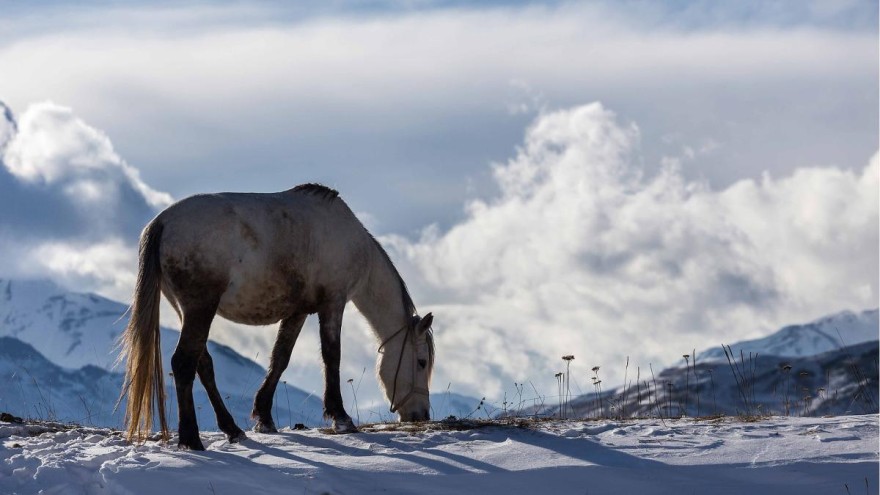
Picture: Decado
spoga horse is the world's leading B2B trade fair for the horse industry. An important plus point for visitors and exhibitors: Its internationality. Exhibitors from 33 countries and visitors from 72 countries took part in spoga horse Autumn 2019. The networking of business partners across national borders is an important mission of spoga horse. That's why in the new series "spoga horse Country Check" we take a close look at the most important sales markets for spoga horse.
Please note: These are partially abridged versions of the articles originally published in the trade magazine "ReitsportBRANCHE" by Sebastian Reichert. If you are interested in the complete publications, you can order the complete Ländlercheck series at info@reitsport-branche.com .
Political and economic facts

Picture: Dorena Beckendorf
"At first glance, many things may not be so visible with regard to the Czech Republic as a country of equestrian sports, but important breeds of horses come from the Czech Republic, and there are important studs and numerous historical monuments, such as riding halls and stables in castles and also race tracks," says Lenka Gotthardová, Chairwoman of the Kinský Horse Association, with regard to her home country as an equestrian nation. The Czech Republic is a Central European landlocked state and, along with Slovakia, one of the two successor states of Czechoslovakia, which existed between 1918 and 1992. The ten-million-strong country is made up of the historic lands of Bohemia and Moravia and parts of Silesia. Neighbouring countries are Germany, Poland, Slovakia and Austria (which is somewhat larger in area). As the Kingdom of Bohemia, the country was part of the Habsburg Monarchy until 1918.
The Czech Republic is surrounded by mountain ranges - the Bohemian Forest, the Ore Mountains, the Krkonoše Mountains (where the Elbe, one of the longest rivers in Europe, rises), the Snow Mountains, the Old Father Mountains, the Beskydy Mountains and the White Carpathians. The highest mountain is the Schneekoppe (1603 metres) in the Krkonoše Mountains. The largest national park - the Šumava National Park - borders on the Bavarian Forest in Germany and is one of the most species-rich natural areas in Central Europe.
The reformer Jan Hus, who was burned at the stake in Constance as a heretic in 1415, is considered a national saint. The Charles University in Prague, founded in 1348 and whose rector Hus was at times, is the oldest university in Central Europe. Besides Prague (1.3 million inhabitants), the cities of Brno (407,000), Ostrava (289,000), Pilsen (172,000), Reichenberg (104,000) and Olomouc (102,000) have more than 100,000 inhabitants. According to formal, institutional religious affiliation, 71 percent do not belong to any religious community - the highest figure in Europe.
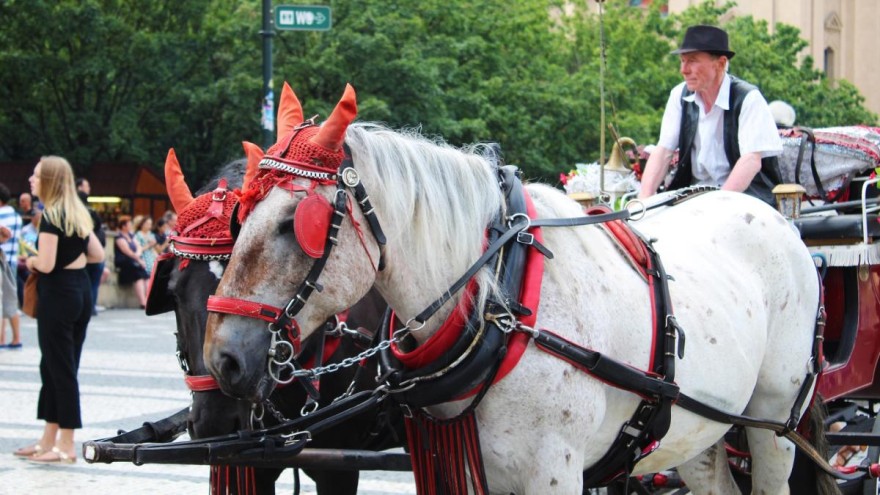
Picture: B. Boellinger
The Czech Republic has been a member of the European Union since 2004. The currency is the strong Czech crown. Between 2015 and the beginning of 2020, the "Swiss franc" of Eastern Europe increased in value by nine percent. In 2018 the Czech Republic had a gross domestic product of 207.8 billion euros. Remarkable, however, are the strong differences between the regions. While the region around the capital Prague is one of the richest regions in Europe in terms of gross domestic product, Central Moravia, for example, only achieves around 60 percent of the EU average.
The Czech economy is highly dependent on international trade. In 2018, the Czech Republic exported goods worth 171.5 billion euros and imported goods worth 156.6 billion euros. Germany is by far the most important partner by far. With an import share of 25.1 percent, the Federal Republic is the most important supplier - ahead of China (14.1 percent) and neighbouring Poland (7.6 percent) - and the most important customer. In 2018, 32.4 percent of all Exports to Germany. This was followed by Slovakia (7.5 per cent) and Poland (6.0 per cent).
Until the Corona crisis, the economy grew for five years in a row without interruption - especially in the construction industry, in mechanical and plant engineering, in the automotive and electrical industries. Škoda - founded in Pilsen in 1859 as an engineering company and once the largest producer of weapons Austria-Hungary - is the largest company in the country. The Czech Republic has the lowest unemployment rate in Europe (average 2019: 2.0 percent), followed by Germany and Poland (about three percent). Full employment prevails in urban and economic centres, at least in the pre-Corona period.
In the extraordinarily large-structured organised agriculture and forestry, hop production is important among other things. Bohemia, with its well-known brands Pilsner Urquell and Budweiser, is a traditional brewery country. Beer is a national drink. Nowhere else is more of it drunk - in 2018, according to the Brewers of Europe association, the average per capita consumption was 141 litres. Probably less well known is that viticulture in the Czech Republic can look back on a tradition of 1000 years. South Moravia is the most important region in this respect. For example, Grüner Veltliner is grown there.

Picture: Rita E.
Equestrian and tournament sports in the Czech Republic
It is not possible to say exactly how high the turnover of the horse industry is. There are no official figures. However, it is estimated that the jobs of some 20,000 people are directly linked to horses. Many more people provide services related to horses - in training, schools, riding equipment and feed manufacturers. About 200,000 people ride horses, estimates horse expert Josef Malinovský, who runs the website www.jezdci.cz.
Incidentally, the country's almost 100,000 horses - of which it is estimated that between 20,000 and 30,000 are available for regular riding - also include some wild horses. Since 2015, Exmoor ponies have been engaged in ecological landscape conservation at the former Milovice-Mlad military training area. Two herds with a total of 30 animals have already grown to 70 animals within four years.
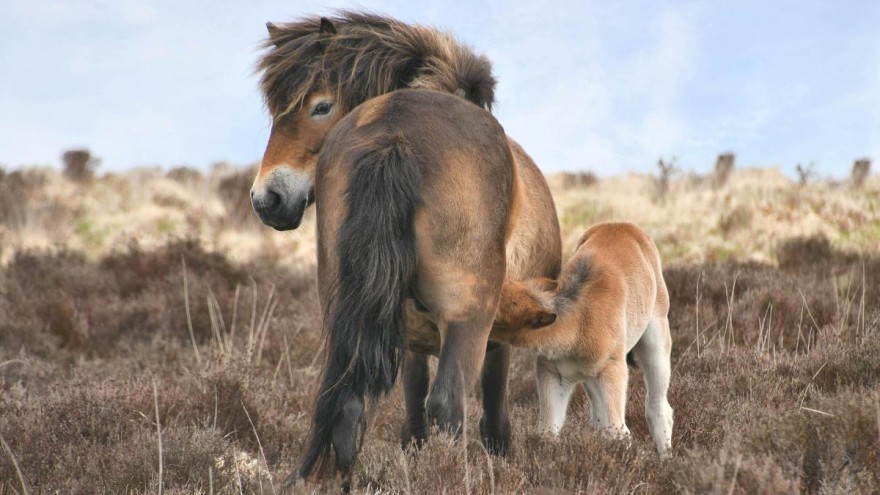
Picture: Rebekka D.
Until the 1990s, a CSIO show jumping competition was organised in Prague (later in Podebrady). Since 2018, the O2 Arena in Prague has hosted the "Super Grand Prix" final tournament of the Global Champions League. The country also hosts (other) international tournaments in show jumping (in Olomouc, Martinice, Ptýrov, Zduchovice), dressage and vaulting (Brno, Mariánské Lázn?), eventing (Pardubice, Humpolec) and carriage driving (Kladruby, Nebanice, Písecné).
In contrast to the national sports of football and ice hockey, few people practice equestrian sports. This is also due to the fact that horse riding was an undesirable sport during the socialist era between 1948 and 1988. "Our riders don't smell of taking part in the Olympic Games - not even in 1980 in Moscow," says Lenka Gotthardová, who was formerly the director of the National Stud in Kladruby and is now the mayor of Kladruby. Only once, exceptionally, were the riders from the Czech Republic allowed to compete at the Olympic Games during this period - in Rome in 1960. The so far only Olympic gold medal was won by the show-jumper František Ventura in 1928 in Amsterdam for Czechoslovakia.
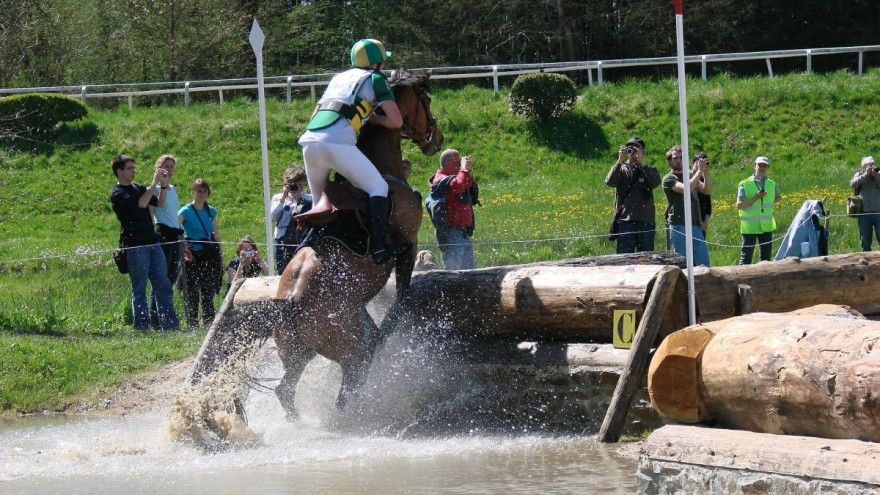
Picture: Guilaine
Horses have a long tradition in the culture of the people of the Czech Republic. For example, the so-called Ride of the Kings in Moravia is part of the immaterial Unesco cultural heritage. This procession has been held since 1808 - among others in Vlcnov, in Kunovice, in Hluk and in Skoronice. It probably goes back to Easter processions, but according to the legend it also refers to the flight of the Hungarian king Matthias Corvinus (in women's clothes). A boy between 10 and 13 years of age is chosen for the role of king. During the ride he wears local female costume. A white paper flower is in his mouth. The silent king is accompanied by a retinue of boys in colourful costumes on decorated horses, who collect donations during the procession.
Legendary and perhaps even tougher than the national sport of ice hockey is the internationally important horse race, which takes place every year in October in Pardubice in eastern Bohemia. The Velká Pardubická steeplechase was first held in 1874. The toughest gallop race on the European continent is considered one of the most important social events in the Czech Republic. "20,000 to 30,000 spectators come - everything is even more impressive live than on television," says Lenka Gotthardová. To date, not a single horse has reached the finish line in any of the 128 races held so far. In 2017, eight out of 19 arrived with riders. More than 50 horses died in the 128 races up to 2018, and the prize money in 2018 was around 182,000 euros. Of the 31 obstacles on the 6900-metre course, the Taxisgraben is the most feared. It may only be jumped once a year. If the horses would remember the 1.50 metre high and 1.80 metre deep thorny hedge with the four metre long ditch behind it, which is not visible when jumping, they would refuse. "For many years two things were enough if you wanted to win this race as a jockey," writes journalist Marc Bädorf. "Firstly, your horse was not allowed to die during the race. Secondly: You, as a jockey (...) should somehow (...) drag yourself to the finish on your horse."
Horse breeding in the Czech Republic
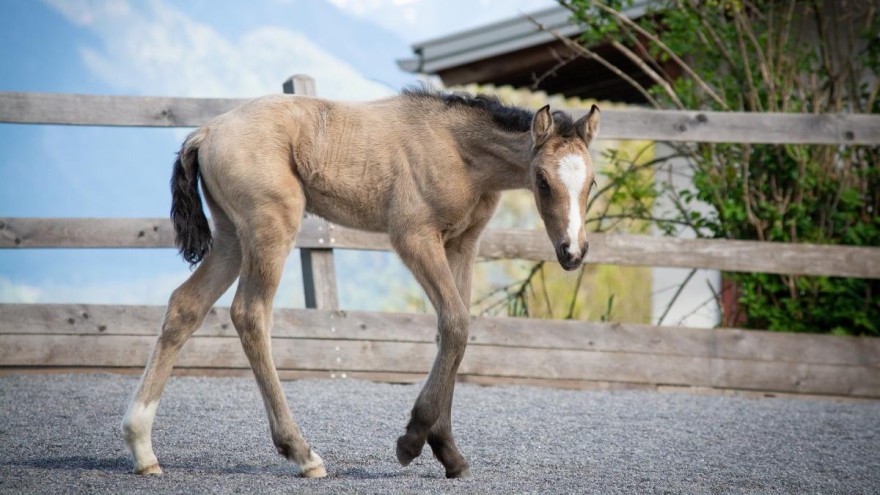
Picture: Pezibear
One of the founders of the race was Octavian Count Kinsky. A Czech horse breed was also named after the nobleman from Bohemia - the Kinský horse, one of the rarest horse breeds in the world and recognised by the Czech Republic as a cultural asset worth preserving. The intensive golden shining coat colour of the Isabellen once led to its establishment as an independent breed. The Jockey Club in Vienna had refused to register the Isabelle mare Themby II in the stud book for English thoroughbreds. Octavian Count Kinský then founded his own stud book. After successful decades of breeding, the noble family was expropriated in 1948 and the breeding was almost entirely absorbed into Czech warmblood. The Association for Kinský Horses (SCHKK) states that currently 300 brood mares and 15 stallions are registered. For comparison, there are about 20,000 Czech warmblood animals.
Besides the Kinský horse, the Kladruber belongs to the most important original horse breed in the Czech Republic. The national stud farm Kladruby nad Labem in Eastern Bohemia was one of the former eight Austro-Hungarian state studs. Appointed as a court stud by Emperor Rudolf II of Habsburg in 1579, Kladruby nad Labem - since 2019 UNESCO World Heritage Site - is one of the oldest studs in Europe. "The Kladruby horse is the oldest Czech native horse breed," says Alena Dvoráková from the Czech Central Register of Horses. The Altkladrub horse was probably the only breed in the world bred for ceremonial purposes. In black and white - grey for court ceremonial, black horse for church ceremonial. Today Kladruby nad Labem, which also includes the Slatinany Castle Stud Farm with a Kladruber Museum, keeps about 500 Altkladruber horses - of course in two colour varieties: white and black. The animals still serve at royal courts today. Queen Margrethe II of Denmark uses a gilded carriage drawn by a six-horse carriage made of Kladrub-bred grey horses for ceremonial journeys to Copenhagen. In Sweden, the trumpeters of the royal cavalry guard ride on Kladruber Schimmeln. In the Czech Republic the Old Kladrubers are often seen at celebrations at Prague Castle. They are also used by the mounted police.
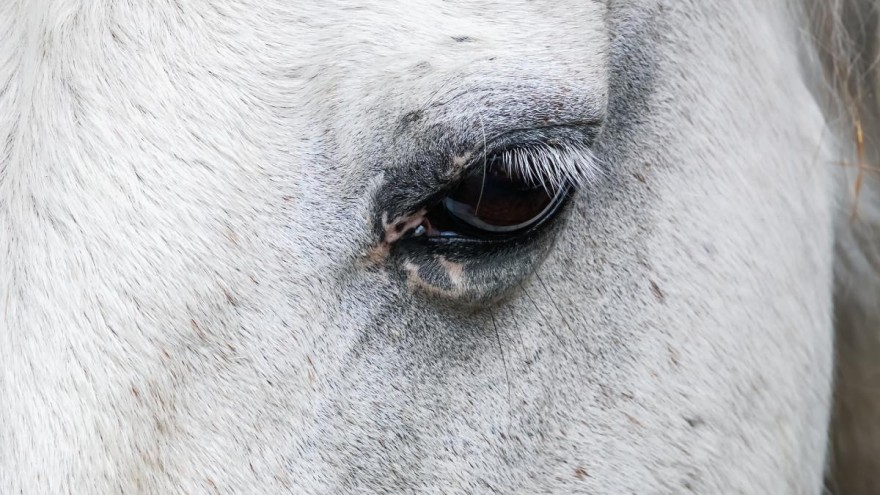
Picture: Couleur
Structure of associations and equestrian trade
The umbrella organisation of all Czech equestrian athletes is Česká Jezdecká Federace (CJF), which joined the FEI in 1927. Its president is Olga Plachá. Around 2010 the CJF still had about 30,000 members. Then there was a restructuring, in the course of which dues became obligatory for all members, even for members who do not participate in competitions. A decrease in membership was the natural consequence. According to insiders' estimates, the Equestrian Federation currently has about 19,000 members. About 3500 people are hobby riders without a licence. As almost everywhere, equestrian sport in the Czech Republic is a predominantly female sport. "In our school in Kladruby, about 100 girls and two to five boys study," clarifies Mayor and horse expert Lenka Gotthardová.

Picture: Iatya Prunkova
She estimates that there are about 200 special equestrian sports shops in the Czech Republic in addition to 24 Decathlon branches, jezdci.cz operator Josef Malinovský estimates that there are fewer shops. "In the times of socialism there was only one equestrian shop in Prague near the Old Town Square - the "Sedlárství Vojír" in Maiselova Ulice," says Lenka Gotthardová, chairwoman of the Kinský Horse Association. At the beginning of the 1990s the first other shops opened.
"Equiservis" in the north-east of Prague is nowadays the largest equestrian shop in the Czech Republic. Stanislav Hakr started in 1993 as a small seller of equestrian equipment. In the meantime there are two more "Equiservis" shops in the country. The company also supplies smaller equestrian sports shops in the country. Some shops are directly connected with the manufacturers of saddles, halter and bridles. Although the number of shops has remained more or less the same as in previous years, "the interest of people and new riders is growing very quickly," observed Josef Malinovský.
Katerina Anna Nohavová, spokeswoman of the Velká Pardubická race, also sees it this way: "The popularity of equestrian sport is growing. Recreational riding has become very popular in recent years". What Lenka Gotthardová confirms: "The interest in horses and riding is growing. Many manufacturers produce very interesting products: Halters, saddles, harnesses, linings and in the case of Petr Novák, Filip Minarík and Ivana Jurna-Lipska also art - very beautiful horse statues and horse pictures".

Picture: Denis Poltoradnev
